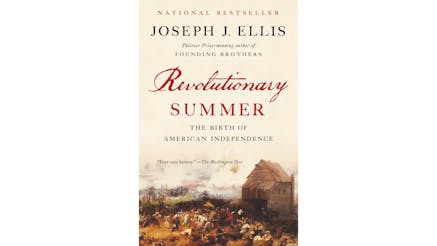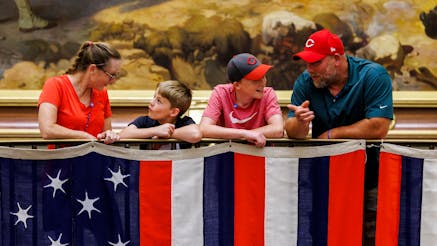Search Results

Revolutionary Summer

A Revolutionary Summer
It’s a Revolutionary Summer at the Museum of the American Revolution
Make it a Revolutionary Summer at the Museum of the American Revolution
Among His Troops: Continental Army Along the Hudson
George Washington called the Hudson River the “Key of America.” With the Mohawk River to the West and Lake George and Lake Champlain to the North, the Hudson was part of a system of waterways that reached from the Great Lakes, to Canada, and down to New York City. During the Revolutionary War, Americans clustered their Hudson River fortifications around three narrows– West Point in the North, the Popolopen Creek in the middle, and King’s Ferry to the South. These posts were between 45 and 60 miles from New York City. In 1781, French troops and a portion of the Continental Army crossed the Hudson River at King’s Ferry on their way to Yorktown, Virginia, a crossing that is now recognized as part of the Washington-Rochambeau Revolutionary Route National Historic Trail. By the summer of 1782, the American Army had secured its control of this region. Along the 15-mile stretch of the Hudson River, Washington maintained a force of over 11,000 soldiers. At the same time, 13,000 British troops occupied New York City. West Point was the Continental Army’s strongest fortification. Verplanck’s Point and Stony Point, on either side of King’s Ferry, were the front line against the British to the south.
The Davenport Letters: June 26, 1782
The letters James Davenport wrote from West Point in May and June of 1782 were just over a month apart, suggesting that he probably wrote more letters home than survive in this set. Little had changed in his circumstances, however, and the soldiers still had “Plenty of duty & Little Provision & less money.” Davenport’s humor comes through in this letter, and it includes facetious remarks about the quality of his paper, young women at home, and the oppressive summer weather.
Picturing Washington's Army: West Point
In August 1782, Pierre Charles L’Enfant painted West Point, the administrative and strategic center of the Continental Army. Since the spring of 1778, West Point had become the army’s largest post. During that summer, New England troops dug entrenchments on the surrounding hills and built fortifications on Constitution Island, across the river. These buildings and fortifications are visible in L’Enfant’s scene.
Image courtesy of Library of Congress, Prints and Photographs Division, Washington, D.C.
The Davenport Letters: August 26, 1780
By August 1780, James Davenport was encamped at Hackensack, New Jersey, north of New York City. That summer, the Continental Army was engaging in regular movements, marches, and active skirmishing with British parties that ventured out of the city. As James endured these marches, he was also reflecting on the larger strategic shifts of the war. Since February 1778, the French had been in a formal alliance with the United States, but many people remained skeptical both of the French and of their long-term commitment to the cause. A second copy of this letter, on different paper and with slightly different spelling, survives in the Davenport family papers.
When Women Lost the Vote: A Revolutionary Story: Mary Curry
Finding Freedom: Andrew - United States Census, 1840
Andrew Ferguson moved to Indiana (which became a state in 1816) after the Revolutionary War. The 1840 United States Census, shown here, documents Ferguson’s residence in Monroe County. Ferguson is listed as a Revolutionary War veteran who received a pension for his military service. He is listed as being 82 years old (or born in about 1758), but he had previously claimed that he was born in about 1765. No other family members are documented in his household.
National Archives and Records Administration, Washington, DC/Ancestry.com